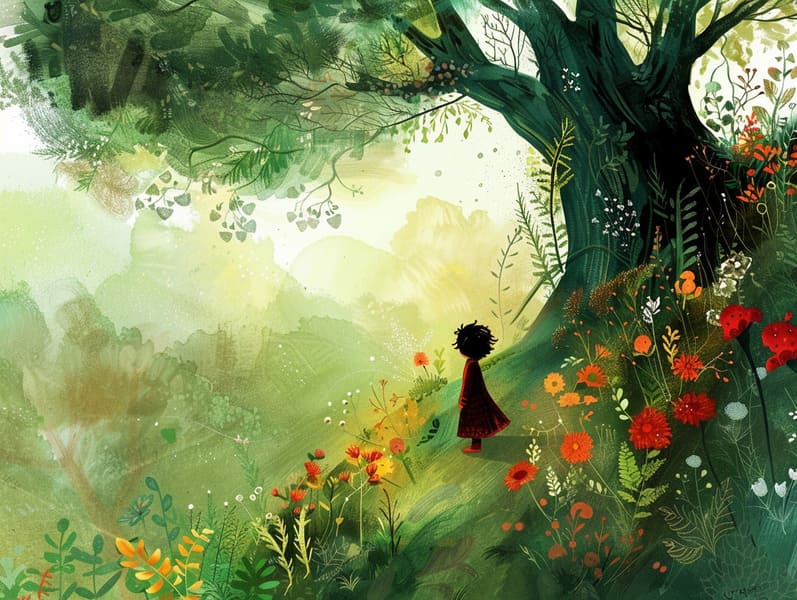The Origins of Fairy Tales and the Perpetual Captivation.
The Origins of Fairy Tales and the Perpetual Captivation.
Blog Article

Timeless fairy tales have legendary status. These tales have been narrated from one generation to the next far before they were ever put on paper. They arose from a variety of backgrounds, including Middle Eastern traditions. They were initially shared among adults, often carrying themes and messages pertaining to the societal norms and beliefs of the time.
The famous Grimm duo, Jacob and Wilhelm (the Grimm brothers), were among the first to compile many of these beloved narratives. Their collection, "Grimm's Fairy Tales," included classics like "Cinderella," "The Bread Crumb Trail," and "The True Story of Snow White," which have since become staples in the world of children's fairy tales. Similarly, Hans Christian Andersen's enchanting tales, such as "The Little Mermaid," and "The Duckling that Could," have enchanted hearts worldwide, securing their place in the pantheon of classic fairy tales.
Despite being ancient, classic fairy tales remain as relevant as ever, especially as kids' bedtime tales. These enchanting tales are now available in different formats, including vividly illustrated books, magical animations, and online fairy tales.
Their lasting presence can be linked to several magical reasons:
Important Morals: Old fairy tales often offer important moral lessons. Stories like "The Wolf and the Liar" teach the significance of integrity, while "The Race of the Tortoise and the Hare" show the values of resolve and meekness. These tales offer young readers clear distinctions between virtue and vice, molding their moral compass in a mild yet lasting way.
Sympathy and Perception: Traditional fairy tales frequently involve figures facing difficulties and adversities, motivating young readers to identify with their struggles and cheer for their triumphs. For instance, "The Tale of Beauty and the Beast" teaches us the value of looking deeper to know the inner being of a soul, nurturing sympathy and discernment.
Cultural Perception: Many timeless fairy tales are deeply ingrained in the cultural contexts from which they developed. Exploring these fairy tales can provide captivating looks into different ways of life, cultivating a sense of world awareness and perception.
Inventiveness and Imagination: The extraordinary elements in classic fairy tales—supernatural elements—encourage children’s dreaming abilities. These tales move readers to fantastical realms, promoting creative dreams and a sense of delight that continues a lifetime.
Ancient fairy tales are not only alluring but also enlightening. They serve as captivating tools in building various cognitive and affective skills in young readers. When timeless fairy tales are told out loud, they promote speaking abilities by presenting new lexicon and sophisticated sentence structures. This practice also strengthens auditory skills and mindfulness, as little ones focus on every detail, enthusiastic to see what happens next.
Furthermore, discussing the themes and characters of traditional fairy tales can cultivate intellectual skills and reasoning skills. The young are guided to find patterns, foresee events, and realize cause and effect. These debates also further kids articulate their thoughts and feelings, advancing their emotional intelligence.
In today’s modern era, the existence of digital fairy tales has made these fairy tales more acquirable than ever. Digital sites and digital apps give ample collections of children's fairy tales that can be looked at or listened to anytime, anywhere. Fairy tales narrated are particularly widespread, providing an interactive way for young readers to immerse in these charming tales. Narrated books and read-aloud videos guide characters and settings to life, often joined by delightful music and soundtracks that raise the story journey.
The persistent attraction of ancient fairy tales lies in their ability to transform to contemporary times while keeping their main lessons. Contemporary retellings of these narratives often present more varied protagonists and modern settings, making them familiar to today’s audience. However, the key lessons of valor, charity, and justness remain unchanged, continuing to touch young readers of all ages.
Ancient fairy tales also offer a sense of ease and familiarity. They impart upon a orderly narrative with a plain beginning, middle, and end, often coming to a close with the closure of conflicts and the triumph of virtue over vice. This dependability can be relieving for young readers, more info granting a sense of sturdiness in an inconstant world.
Old fairy tales continue to allure and train new generations, maintaining their radiance and meaningfulness in modern society. As kids' bedtime tales, they put forth a perfect blend of wonder and wisdom, encouraging moral values, empathy, and creativity. The proliferation of online fairy tales and the popularity of fairy tales voiced ratify that these classic tales remain within reach to new generations.
By preserving and broadcasting these tales, we continue to honor the rich tapestry of narrative artistry and cultural heritage. Whether you are perusing a artistically illustrated book, exploring a digital collection, or listening through an voice book, the beauty of old fairy tales is always within reach. These narratives point out of the undying spell of stories and its ability to bond us across eras and regions.
Regardless if you are reading a colorful picture book, browsing a web-based collection, or listening through an voice book, the mystique of ancient fairy tales is always within reach.
These tales remind us of the immortal spell of stories and its ability to draw us together across eras and regions, establishing a link that fascinates and enlightens alike.